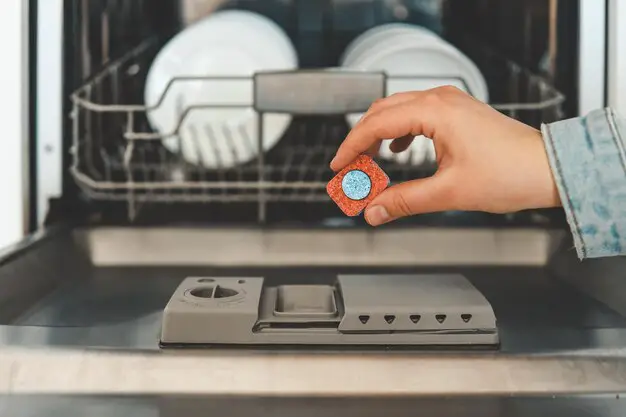Bosch dishwashers are known for their superior performance and reliability. With advanced features and intuitive controls, starting your Bosch dishwasher is a breeze. Whether you’re a new owner or have been using a Bosch dishwasher for years, this step-by-step guide on how to start your Bosch dishwasher will walk you through the process of starting your dishwasher efficiently and effectively.
Understanding the Control Panel
Before you start your Bosch dishwasher, it’s important to familiarize yourself with the control panel. The control panel is located on the front of the dishwasher and consists of various buttons and indicators. Each button serves a specific function and allows you to customize your dishwasher’s settings according to your needs.
To begin, locate the power button on the control panel. Press and hold the power button for a few seconds until the dishwasher powers on. Once the dishwasher is powered on, you can proceed to prepare your dishes for the dishwasher.
How to Start Your Bosch Dishwasher
Preparing your Dishes for the Dishwasher
Properly preparing your dishes before loading them into the dishwasher can help ensure optimal cleaning results. Start by scraping off any excess food particles from your plates and utensils. It’s not necessary to pre-rinse your dishes, as Bosch dishwashers are designed to handle even tough, dried-on food stains.
Next, remove any large food debris from your dishwasher’s filter. The filter is usually located at the bottom of the dishwasher and can be easily removed for cleaning. Regularly cleaning the filter helps maintain the dishwasher’s performance and prevents clogs.
Once your dishes are ready, it’s time to load them into the dishwasher.
Loading the Dishwasher Properly
Loading your dishwasher properly is essential for efficient cleaning and to maximize the dishwasher’s capacity. Start by placing larger items such as plates, bowls, and pots in the bottom rack. Make sure to position them in a way that allows water to circulate freely around them.
You can place smaller items like glasses, cups, and utensils in the top rack. It’s important to avoid overcrowding the dishwasher, as this can prevent water and detergent from reaching all the dishes.
If your dishwasher has a third rack, this can be used to hold larger utensils and small items that may otherwise fall through the spaces in the bottom rack. Take advantage of this additional space to optimize your dishwasher’s capacity.
Adding Detergent and Selecting the Right Cycle
Once your dishes are loaded, it’s time to add detergent and select the appropriate cycle for your cleaning needs. Bosch dishwashers are designed to work with a variety of detergent types, including powder, liquid, and detergent pods. Follow the manufacturer’s instructions for the recommended amount of detergent to use.
To add detergent, locate the detergent dispenser on the dishwasher’s door. Open the dispenser and carefully pour the detergent into the designated compartment. Close the dispenser and ensure it is securely latched.
Next, select the right cycle for your dishes. Bosch dishwashers offer a range of cycles, including normal, heavy, eco, and quick wash. Choose the cycle that best suits your needs and preferences. Additionally, you can adjust the temperature and drying options if desired.
Adjusting Additional Settings
In addition to selecting the cycle, Bosch dishwashers offer a variety of additional settings that can be adjusted to customize your dishwasher’s performance further. These settings include delay start, sanitize, and extra dry.
- The delay start feature allows you to set a specific time for the dishwasher to start the cleaning cycle. This can be useful if you want to take advantage of off-peak electricity hours or have the dishwasher ready to unload at a specific time.
- The sanitizer option increases the water temperature during the final rinse to effectively kill bacteria and germs on your dishes. This is particularly useful for households with young children or when washing items that require extra hygiene.
- The extra dry setting increases the drying time and temperature, ensuring your dishes come out completely dry and ready to be put away.
Starting the Dishwasher
With all the settings adjusted to your preference, you’re now ready to start your Bosch dishwasher. Press the start button on the control panel, and the dishwasher will begin the selected cycle. You may hear the sound of water filling the dishwasher and the gentle hum of the dishwasher’s motor as it begins cleaning.
It’s important to remember that once the dishwasher has started, it’s best to avoid opening the door unless absolutely necessary. Opening the door can interrupt the cycle and prolong the cleaning time.
Caring for your Bosch Dishwasher
To ensure your Bosch dishwasher continues to perform at its best, regular maintenance and care are essential. After each use, wipe down the dishwasher’s interior with a soft cloth to remove any residual moisture or food particles. This helps prevent the growth of bacteria and keeps your dishwasher clean and odor-free.
Additionally, it’s recommended to clean the dishwasher’s filter regularly. Remove the filter and rinse it under running water to remove any trapped debris. Be sure to check for any clogs in the spray arms and clear them if necessary.
Finally, consider using a dishwasher cleaner periodically to remove any buildup or limescale that may affect the dishwasher’s performance. Follow the manufacturer’s instructions for the proper use of dishwasher cleaners.
My Opinion
Starting your Bosch dishwasher is a straightforward process that can be easily mastered with a little knowledge and practice. By understanding the control panel, properly preparing your dishes, and selecting the right settings, you can ensure optimal cleaning results every time.
Remember to monitor the progress, troubleshoot any issues that may arise, and care for your dishwasher to maintain its performance and longevity. With these steps in mind, you’ll be well on your way to enjoying the convenience and efficiency of your Bosch dishwasher for years to come.




